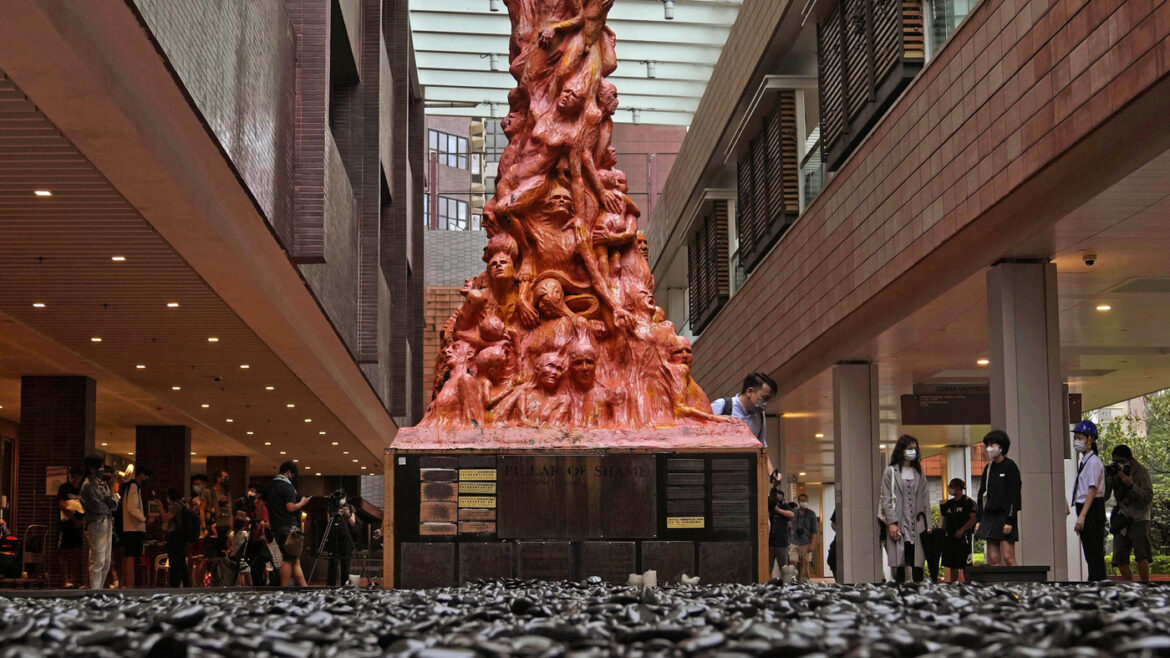Hong Kong: Hong Kong’s oldest university launched an overnight operation on Thursday to dismantle the statue commemorating those killed in Beijing Tiananmen square in the latest blows for academic freedom when China fell.
“Pillar shame” eight meters (26 feet) by Jens Galschiot has been sitting on the University of Hong Kong (HKU) campus since 1997, the year the former British colony was handed back to China.
This statue displays 50 sad faces and tortured bodies stacking each other and commemorating democratic protesters killed by Chinese forces around Tiananmen Square in 1989.
His presence is a clear illustration of Hong Kong freedom compared to mainland China where events in Tiananmen are very censored.
But Beijing currently revoked Hong Kong in his own authoritarian image after democracy protested two years ago and commemorating Tiananmen had become illegal effectively.
In October, HKU officials ordered the removal of sculptures quoting new legal risk but not determined.
They made goodness in the promise early on Thursday morning.
Close to the night
University staff use a floor sheet to the ceiling and plastic obstacles to protect the statue from the view because the sound of the drilling and metal clans can be heard all night, according to an AFP reporter at the scene.
The security guards blocked reporters from approaching and trying to stop the mediating media filming.
Workers in hard hats can then be seen using a crane to maneuver a large piece of statue, wrapped with plastic, towards the nearest container.
HKU confirming the statue was removed and placed in storage after the operation was complete.
“Decisions on old statues are based on external legal advice and risk assessment for the best interests of the university,” said the University.
His statement said there were no parties who had obtained approval to display statues and also cite the procedures for the crime of the colonial era in justifying the removal.
The law includes incitement crimes and is increasingly deployed by the authorities – with new national security laws imposed by Beijing – to criminalize differences of opinion.
‘Startling’
Galschiot told AFP it was “strange” and “surprisingly” for the university to move on the statue, which he said remained his personal property.
“This is a very expensive statue. So if they destroy it, then of course we will sue them,” he added. “Unfair.”
Galschiot said he had offered to take the statue and, with the help of lawyers, try various ways to connect with the university.
HKU officials have never contacted him or reminded him of the actions starting at the end of Wednesday, he said.
The artist sent an email to supporters, pushed them to “document everything that happened to the statue”.
“We have done everything we can told (hku) that we really want to take a statue and bring it to Denmark,” he said.
Hong Kong used to be the only place in China where mass memories of Tiananmen are still tolerable.
For three decades, Candlelight Candlelight June 4 Annual will draw tens of thousands.
With its slogans for democracy and ending the government of one party in China it became a symbol for political freedom enjoyed by Hong Kong.
But that era is now over.
The authorities have banned the last two Vigils quoting a pandemic sermon and security of Coronavirus.
They have demanded the leaders of vigil organizers with subversion – national security crime – and closed the Tiananmen museum that the group used to run.
The assembly prosecution that violated the law had been brought to dozens of activists who participated in 2020 and 2021 prohibited Vigils Tiananmen.
Scores of opposition figures have been imprisoned or escaped abroad, and the authorities have also started a mission to rewrite history and make the city more “patriotic”.






